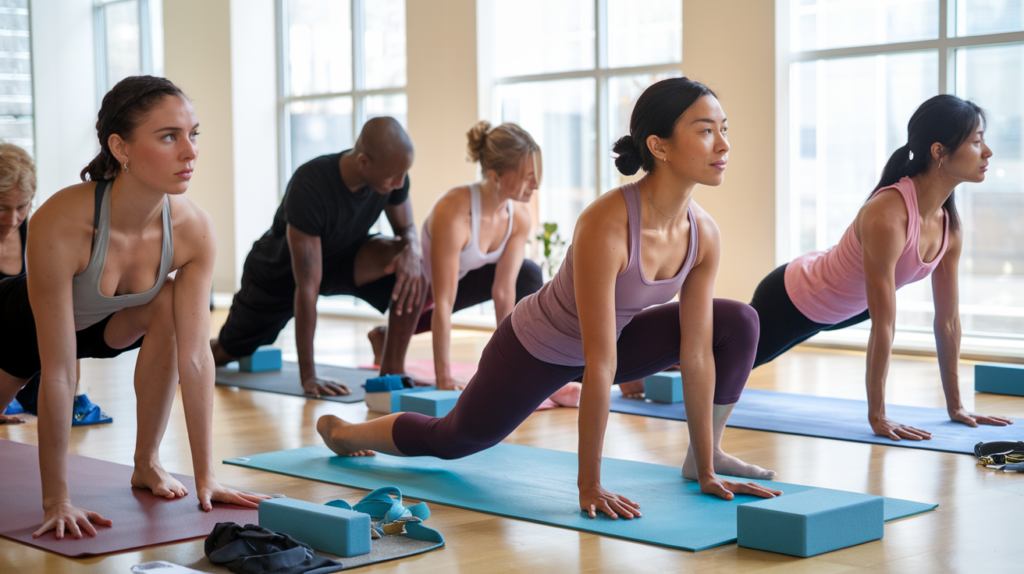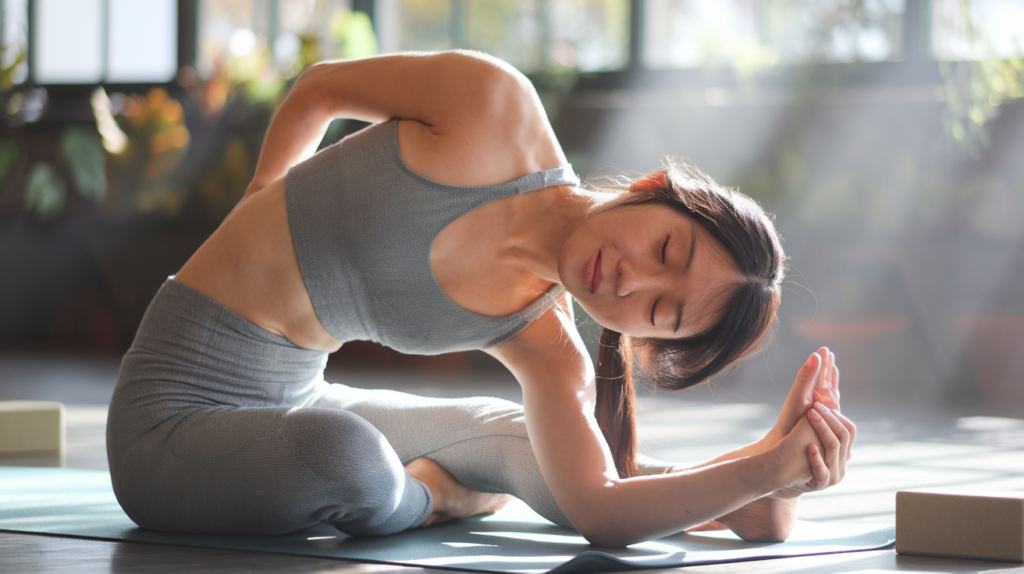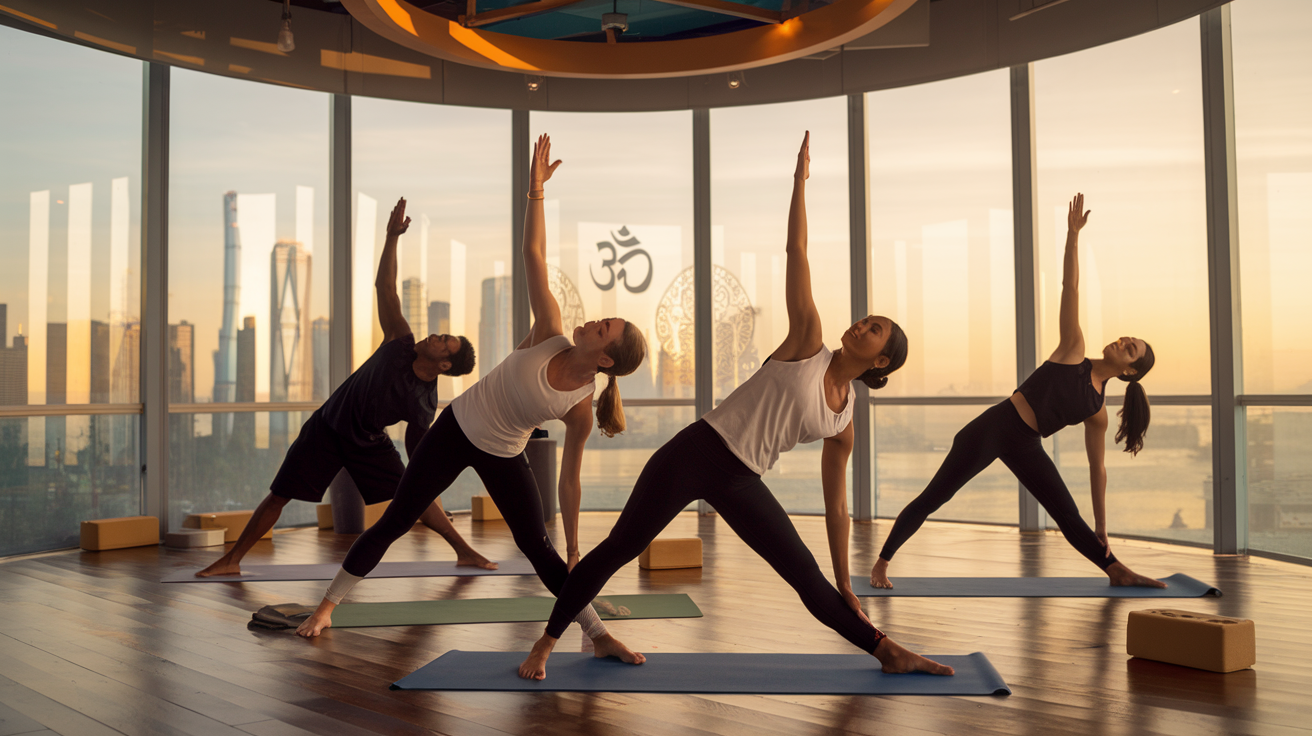Introduction to Yoga
Hey there, yoga enthusiasts and curious minds! Today, we’re diving into the wonderful world of yoga. It’s not just about twisting yourself into a pretzel or standing on your head (though that can be pretty cool). Yoga is a holistic practice that connects your mind, body, and spirit.
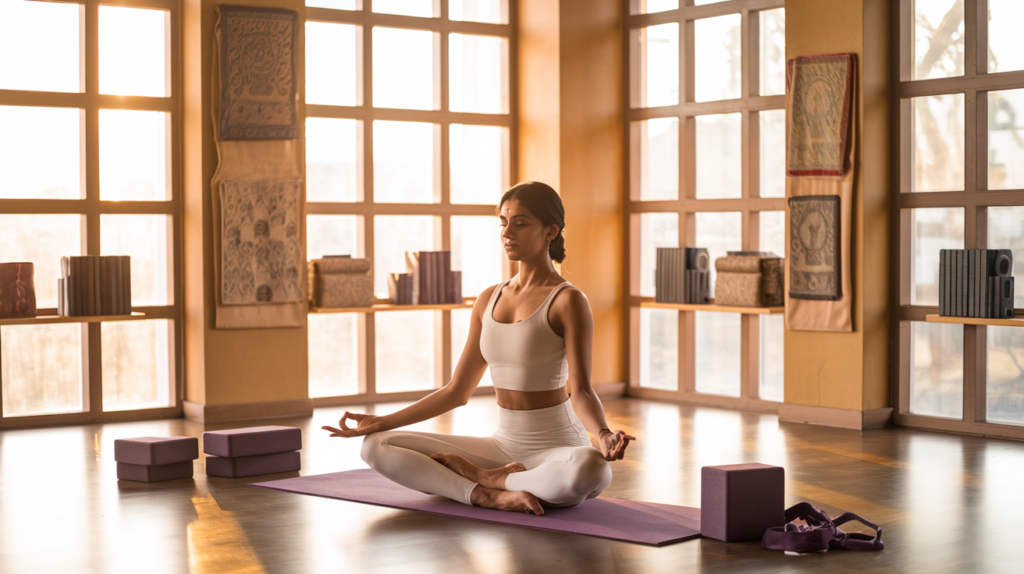
Unlocking the Ancient Wisdom of Yoga: Through Time & Practice
In today’s fast-paced world, where stress and anxiety have become unwelcome companions, yoga offers a sanctuary of peace and well-being. This ancient practice, born thousands of years ago in India, has transcended time and geography to become a global phenomenon that nourishes both body and spirit. Unlike many modern fitness regimens, yoga isn’t just about physical exercise—it’s a holistic approach to health that integrates breathwork, meditation, and mindful movement into a transformative experience. Whether you’re seeking flexibility, strength, stress relief, or spiritual growth, the diverse world of yoga has something valuable to offer.
Join me on this enlightening journey as we explore the essence of yoga, its fascinating history, and its profound relevance in our contemporary lives. From gentle poses perfect for beginners to challenging asanas for advanced practitioners, I’ll be guiding you through various levels of yoga practice—beginner, intermediate, and advanced—to help you find your perfect path. Stay tuned as we unfold the rich tapestry of yoga together, one asana at a time.
Did you know? The word “yoga” comes from the Sanskrit word “yuj,” which means to join or unite.
What is Yoga: Understanding the Ancient Practice
Yoga is not just about physical exercises—it’s a science of right living. It’s meant to be part of our everyday life. It works on every part of a person, from the physical body to the energy levels (vital), mind, emotions, inner self (psychic), and even spiritual well-being.
The word “yoga” means unity or oneness. It comes from the Sanskrit word “Yuj,” which means to join. Spiritually, this means connecting our consciousness with the universal one. But in simple, daily life terms, yoga helps us balance and harmonize our body, mind, and emotions.
This balance is achieved through regular practice of:
- Asana: Sitting or holding a posture that is steady and comfortable. Practically, it helps the whole body work in harmony and improves overall well-being.
- Pranayama: This is controlled breathing that helps guide the flow of Prana (life force energy) through the nadis (energy channels) in our energy body, also called pranamaya kosha.
- Mudra: Mudra means gesture or attitude. In yoga, it refers to specific gestures that guide the energy flow and help connect our energy with the larger, cosmic energy.
- Bandha: This Sanskrit word means to lock or tighten. Bandhas are used to lock the energy (prana) in certain parts of the body and direct it towards the sushumna nadi, aiding in spiritual awakening.
- Shatkarma: A set of six powerful cleansing techniques (Shat = six, Karma = actions). These are systematic practices for deep body purification. They must always be learned from an experienced teacher and not just from books or unqualified sources.
- Meditation: A practice of turning inward, helping us develop awareness, inner peace, and truthfulness in both thought and action.
The History of Yoga: A Journey Through Time
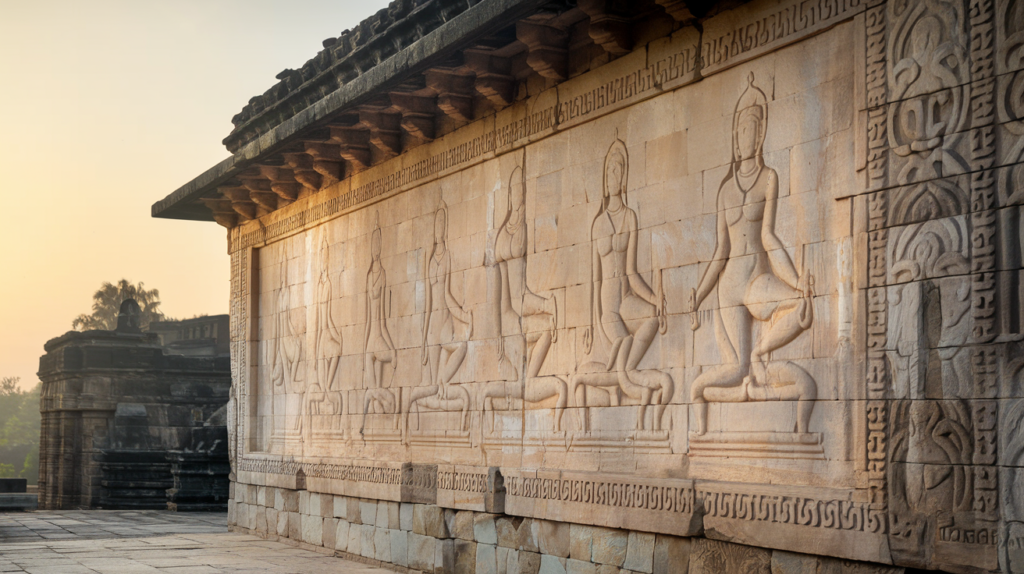
Yoga is one of the oldest practices known to humanity, with its roots tracing back over 5,000 years in ancient India. It began not as a form of physical exercise, but as a spiritual discipline aimed at helping individuals achieve harmony between the mind, body, and spirit. The earliest mention of yoga can be found in the Rig Veda, one of the oldest sacred texts of India. These early references were mostly spiritual hymns and mantras used by Vedic priests during rituals.
As time went on, yoga evolved and took a more structured form in the Upanishads, where the idea of connecting the individual soul (atman) with the universal soul (brahman) became a central theme. The Bhagavad Gita, written around 500 BCE, introduced three main paths of yoga: Karma Yoga (path of action), Bhakti Yoga (path of devotion), and Jnana Yoga (path of knowledge).
Later, around the second century BCE, the sage Patanjali compiled the Yoga Sutras, a collection of 196 concise statements that laid the foundation for Raja Yoga (the royal path). Patanjali’s work systemized yoga into the eight limbs (Ashtanga Yoga), including ethical guidelines, physical postures (asanas), breath control (pranayama), and meditation. This is still considered the philosophical backbone of classical yoga.
In the centuries that followed, yoga expanded into various schools and styles, blending with Tantra, Hatha, and other traditions. Hatha Yoga, which emphasizes physical postures and breath control, gained popularity between the 9th and 15th centuries and later became the foundation for many modern yoga styles we see today.
Yoga made its way to the Western world in the late 19th and early 20th centuries through spiritual teachers like Swami Vivekananda and Paramahansa Yogananda. In modern times, it has grown into a global practice, recognized not only for its spiritual depth but also for its physical and mental health benefits.
Though yoga has transformed in many ways over the centuries, its core purpose remains the same—to bring balance, peace, and unity within oneself and with the world.
Why Yoga Matters Today
In today’s fast-paced, stressful world, yoga is more relevant than ever. With constant digital distractions, long working hours, and growing mental health concerns, many of us feel disconnected from our bodies, our breath, and even from ourselves. Yoga offers a gentle, powerful way to reconnect. It’s not just about flexibility or physical fitness; it’s about creating space within to breathe, to pause, and to be present. Whether it’s through a few minutes of mindful breathing, simple stretches, or quiet meditation, yoga teaches us to slow down and listen to our thoughts, our emotions, and our needs. It helps reduce anxiety, improve sleep, boost energy, and build emotional resilience. Most importantly, yoga encourages self-awareness and self-care, which are the cornerstones of a balanced, peaceful life. In a world that often pushes us toward burnout, yoga gives us the tools to return to calm, clarity, and inner strength—one breath at a time.
Benefits of Practicing Yoga
Yoga offers a wide range of benefits that can truly transform your daily life. First and foremost, it’s a powerful tool for stress relief, helping to calm the mind, reduce anxiety, and bring a sense of peace and clarity. Over time, regular practice improves flexibility and builds strength, making you feel more limber and physically balanced. You’ll also notice better posture as yoga encourages body awareness and alignment, helping you break free from slouching habits.
One of the most beautiful aspects of yoga is how it promotes mindfulness. By focusing on your breath and movement, you naturally begin to live more in the moment—something that can positively affect many areas of your life. And if you choose to join a local class or an online community, yoga can also be a wonderful way to connect with like-minded people who are on a similar path of self-care and growth.
Yoga Asana for Everyone: Beginner, Intermediate, and Advanced
The beauty of yoga is that it’s for everyone, regardless of age, fitness level, or flexibility. Let’s break it down into three main groups:
Beginner Group
This group is suitable for those who are new to yoga, recovering from illness, or have limited strength or flexibility. It includes simple, gentle practices designed to gradually awaken the body and calm the mind. These asanas require minimal effort and help develop awareness, balance, and coordination. Regular practice prepares beginners for more advanced postures by building a solid and safe foundation.
The focus is on ease, comfort, and steady progress, making yoga accessible and enjoyable for everyone. With consistent practice, even small movements can lead to meaningful transformation in body and mind.
Intermediate Group
This group of practices is meant for those who have comfortably completed the beginner level and are ready to take the next step. These asanas are moderately challenging and require a bit more steadiness, focus, and coordination with the breath. They are ideal for individuals who can perform basic postures without strain or discomfort. At this stage, you’ll begin to deepen your physical strength, enhance flexibility, and sharpen mental concentration. These practices gently encourage you to move with greater awareness and control, laying the groundwork for more advanced techniques.
Advanced Group
This group is designed for experienced practitioners who have developed strength, flexibility, and mental discipline through the earlier levels. These asanas are more demanding and require refined control of body, breath, and awareness. They aim to deepen inner focus, promote energetic balance, and prepare the body and mind for prolonged meditation and spiritual growth. Consistent practice at this stage supports a harmonious integration of physical, mental, and subtle energies, guiding you towards self-mastery. This level invites a deeper commitment & conscious presence, allowing your practice to become a path of inner transformation.
General Notes for All Practitioners:
Yoga is a personal journey, and everybody is different. If at any point you feel constant strain, dizziness, pain, or any form of discomfort while practicing, stop immediately. Do not push through pain or force your body into any posture.
Before beginning any new exercise routine, especially if you have pre-existing medical conditions, injuries, or are pregnant, it’s strongly advised to consult with your doctor or a qualified healthcare professional.
The practices shared on this page are for general wellness and should be approached with self-awareness and care. Listen to your body, progress at your own pace, and remember: yoga is not about perfection — it’s about connection, balance, and mindful growth.
What’s Coming Up?
I’m excited to share that we’ll be diving deeper into each of these categories in future posts. You’ll find separate pages dedicated to beginner, intermediate, and advanced yoga practices, each filled with different asanas (poses) to try.
Remember, yoga is a personal journey. It’s not exercise, it is complementary to exercise. There are several differences in the way asana and exercise affect body mechanisms. When Yoga Asana is performed, respiration and metabolic rates slow down, and the consumption of oxygen and the body temperature drop. During exercise, however, the breath and metabolism speed up, oxygen consumption rises, and the body gets hot. Yoga postures tend to arrest catabolism, whereas exercise promotes it. In addition, Asana is designed to have specific effects on glands and internal organs, and to alter electrochemical activity in the nervous system.
So, grab your mat, take a deep breath, and let’s start this amazing yoga adventure together!
Subscribe to The Zen Journal to stay updated on my latest Yoga post

